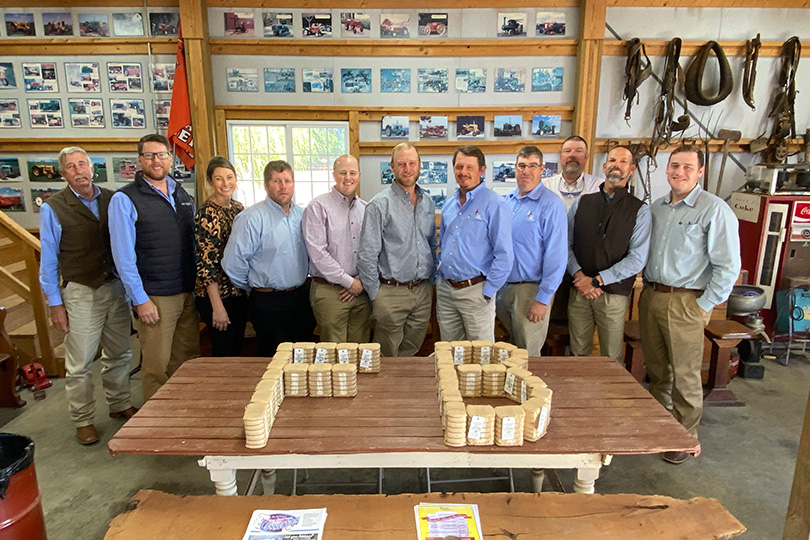By Emmy Powell
Communications Specialist
Members of Texas Farm Bureau’s (TFB) AgLead XV class toured farms, ranches and agricultural businesses in the Panhandle last month.
The trip allowed AgLead members to engage with farmers, ranchers and industry leaders from Lubbock to Amarillo. They discussed the unique challenges facing agriculture in the area.
“We started in Lubbock and discussed the large presence of cotton in that area,” Tryce Berend, a rancher from Somervell County, said. “We toured a cotton farm, a cotton gin, a compress, a few different things in the cotton industry.”
Berend noted he gained new perspectives from the trip.
“I grew up on a dairy farm in North Central Texas, so it was petty new to me,” he said. “We didn’t have the row crop agriculture like they do out there. Cotton is one of the big row crops, and I learned quite a bit about the cotton industry. It was neat to see how big of a presence cotton has in the Panhandle.”
The group also visited and toured the U.S. Department of Agriculture’s (USDA) Agricultural Research Service Center, National Ranching Heritage Center, Back to Nature Compost, PYCO Industries, Farmer’s Cooperative Compress, USDA Classing Office, Busters Cotton Gin and the FiberMax Center for Discovery. They visited with the leaders from the National Sorghum Checkoff and Texas Association of Dairymen.
“We were able to visit the FiberMax Center for Discovery, which is a museum that helps teach kids where their food comes from,” Berend said. “The museum encourages kids and adults to see what agriculture does for them.”
The group traveled north to Plainview and Amarillo, where they toured Legacy Dairy, Texas Cattle Feeders, the Texas Tech University Vet School, Caviness Beef Packing Plant and West Texas A&M University. They also met and discussed agriculture with Amarillo Mayor Ginger Nelson and the Texas Wheat Producers Board and Association.
Throughout the trip, the group discussed the unique aspects of agriculture in the Panhandle, which includes the impact of the Ogallala Aquifer, the largest underground reservoir in the United States. The aquifer lies beneath most of the High Plains.
“It was a great trip for a North Central Texas boy to see and to get a little bit of a glimpse,” Berend said. “In the Panhandle, they are able to use irrigation with the Ogallala Aquifer, but it continues to deplete each year. It was interesting to see how they’re preparing and trying to implement different seed varieties and different crops that require less water. They don’t see as much rainfall as we get in Central Texas. If the Ogallala Aquifer continues to deplete, they’re going to have to work around that, but they’re already working to be good stewards of the land.”
Challenges the group found in common include urban sprawl. Berend noted the large impact that has on Texas farmland and the role it plays on Texas agriculture.
The trip allowed the class a chance to network and learn about various agricultural issues, as well as leadership strategies.
“We have our agricultural sectors that we grew up in, so it is important to see the big picture of agriculture. Through AgLead, we get to see a little bit of every sector, which helps us speak on issues and understand different topics from the industry perspective or even politically.”
AgLead is a two-year leadership development program that takes participants across Texas, the country and the world to discover agriculture and leadership from a new perspective.
For more information about TFB’s AgLead program, visit texasfarmbureau.org/aglead.

